- Home
- Destinations
- Espita
Espita
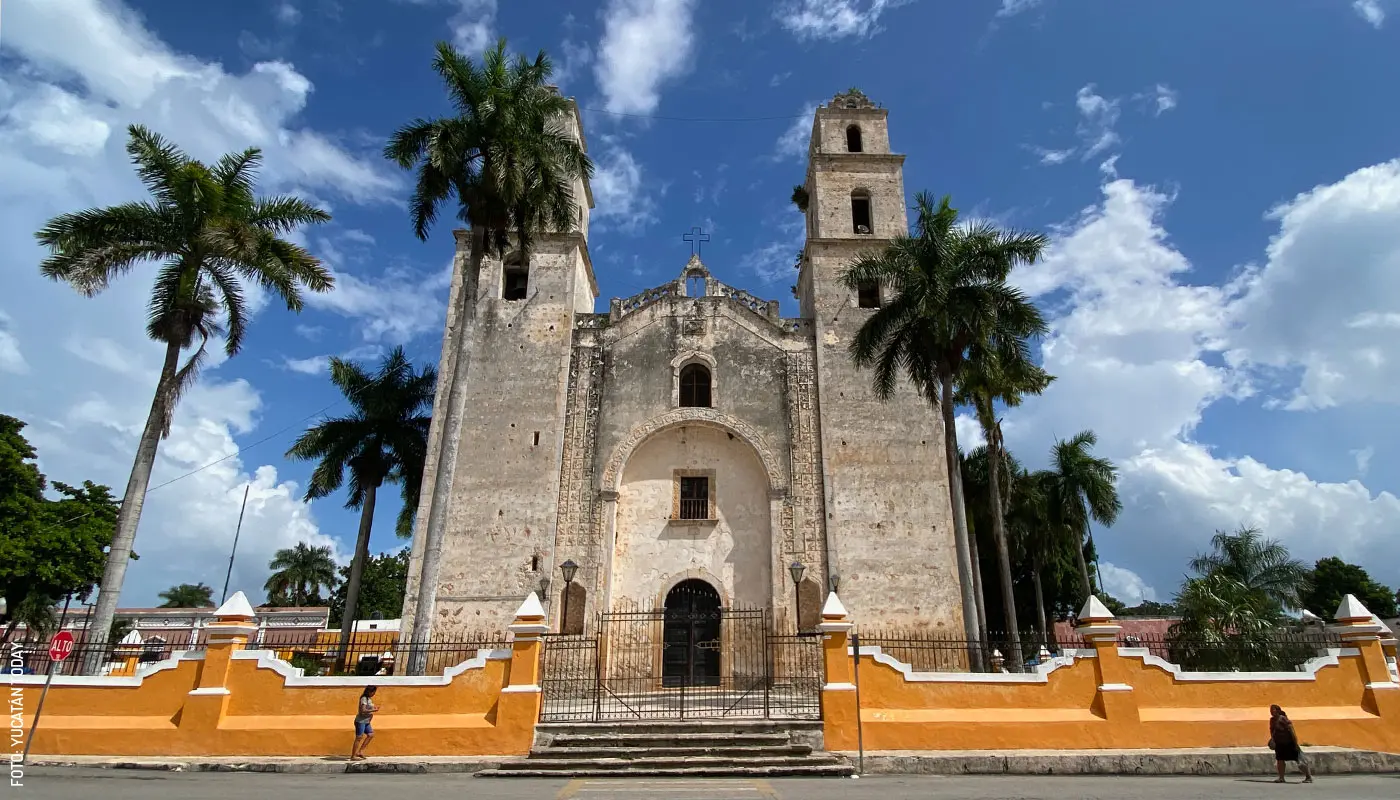
Prepare your visit to Espita
Located at 162 km (or 102 miles) and roughly a 2-hour drive from Mérida, the Magical Town of Espita is conveniently close to Tizimín, Valladolid, Uayma, Chichén Itzá and coastal towns like San Felipe, Río Lagartos, and Las Coloradas, captivating municipalities that are well worth the trip.
A look at the history of Espita
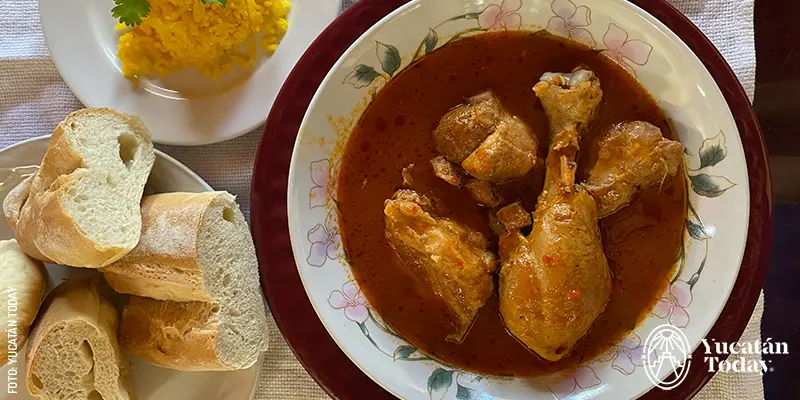
The name Espita comes from Xppithá, which is the name of the Maya community that originally settled here. These inhabitants were part of the Cupul chieftaincy, one of the most populated provinces of its time. Xppithá, interpreted by some as “Scant Water” due to the limited availability of freshwater, and by others as “Water that Leaps Over”, is cited in the Chilam Balam of Chumayel as one of the places visited by the Itzáes during their pilgrimages.
What to see and do in Espita
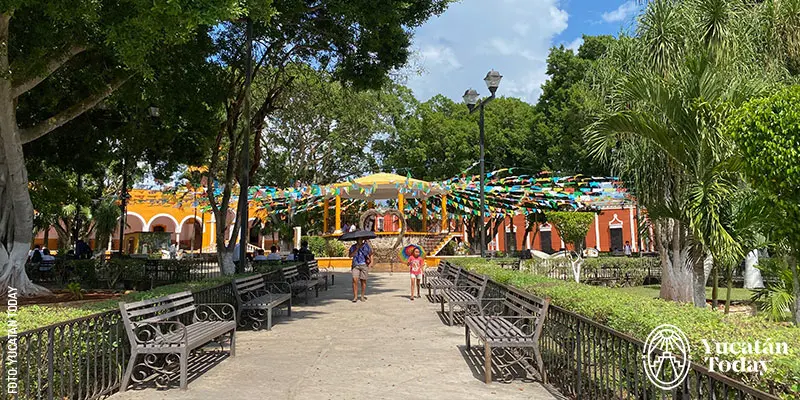
Take a moment to stroll through the Espita’s main square (officially named Melchor Ocampo square, but also known as K’íiwik Espita) and pause to explore the neighboring buildings. You'll come across the Casa de la Cultura (the House of Culture), formerly the Manuela Olivares Primary School (named after one of the first headmistresses of Espita's first girls' school in 1868). This venue now hosts classes in Maya, English, music, dance, gastronomy, and painting. Additionally, it houses a well-stocked library, offering insights into Espita's history. If you’re facing Casa de la Cultura, to your right you’ll see the beautiful San José (Saint Joseph) church and, across from it, the Juan José Méndez municipal market, which hosts a cute fountain with a Mestiza in its center. Both the market, its side street, and the square with the fountain are usually bustling with life every morning. Fun fact about the church: it underwent reconstruction in 1738 following the unfortunate fire that razed the original chapel. Today, it’s considered to be a Yucatán Cultural Heritage site.
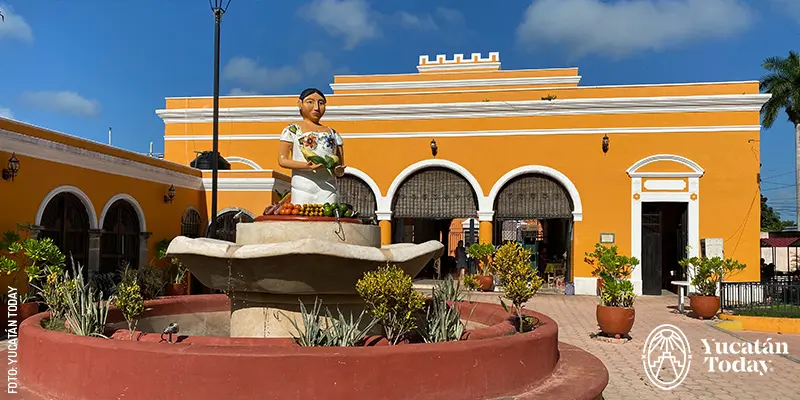
The church and its surroundings come alive each December as Espita commemorates its patron saints, the Baby Jesus (Christ Child) and Saint Joseph, with festive celebrations by various guilds lasting usually from December 8 to 28. Read more about the celebration in the section Important Dates in Espita.
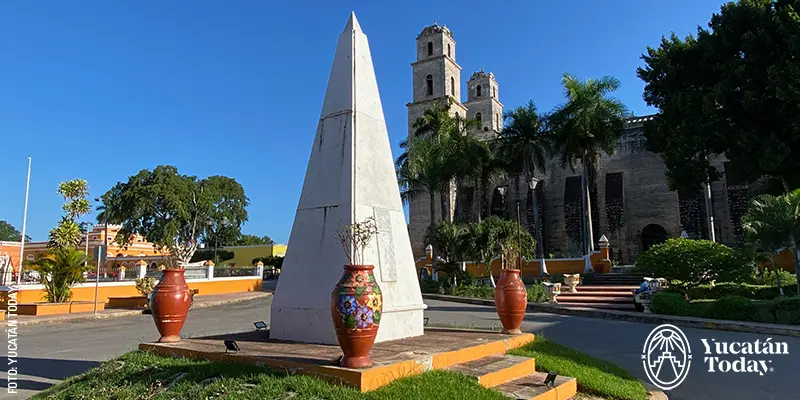
Continuing your stroll around the church, you'll come across a quaint park and a peculiar monument—an obelisk representing the '15 Greats of Espita.' This event dates to February 15, 1848, during the Caste War. During that fateful day, these “Great 15” were children, young adults, and elders who defended Espita against Maya rebels. Taking advantage of the absence of many men from Espita, Tizimín, and Valladolid, who had left certain areas undefended as part of a strategic move, the rebels attacked. However, the “Great 15” managed to repel the attackers.
An obelisk was erected on the centenary of this event; it’s important to note that during the unveiling ceremony, a speech discussing the causes of the Maya uprising was delivered. It emphasized that the homage was paid to the bravery of the defenders, rather than their ideology.
Important dates in Espita
One of Espita’s most important festivities is the celebration honoring the Baby Jesus, Espita’s Saint Patron, that is held on the days around Christmas. When we say “celebration,” we mean that during these dates there will be various folk activities taking place such as “vaquerías,” Gremios’ (guild) processions, concerts, and dances; all with great appeal for visitors because of their joy, colors, and traditions.
In Yucatán the religious fiestas are planned in advance. Here, various pilgrimages take place starting in October, to and from different communities around Espita, to show pilgrims’ devotion to Baby Jesus. In November the “Convite” takes place, a walk through the main streets of Espita where the authorities and residents, dressed in regional attire and accompanied by music and “Voladores (fireworks),” invite their own townspeople and visitors alike to join the celebration of the holy Baby Jesus, everything ends with a huge meal for everyone and a popular dance.
As part of the advance preparations, around December 9 the image of the Baby Jesus is taken from its niche in the San José church. This is called “La Bajada del Niño,” which can be both “The Child’s Descent” or “The Lowering of the Child.” The Child then begins his journey visiting the homes of each of the approximately 30 “Gremios” (guilds) that adore him. The first day belongs to the Güemez family Gremio; this is because back between 1915 and 1917, then governor Salvador Alvarado ordered the destruction of a good part of Yucatán’s religious buildings and the art within. Don Miguel Güemez rescued the image of Baby Jesus and set up an altar at his own home so people could carry on with their worship.
The other days correspond to each one of the other “Gremios,” many of them with a very long tradition and history. Every day a Gremio comes in to take the image with them, then they organize a procession to return it to the church at night. All the Gremio members wear their best regional attire, and the children and women carry bouquets of fresh flowers that will be given to Baby Jesus. It’s amazing to see the city's movement and joy because of the festivity.
All the activities take place in an environment of brotherhood, with neighbors, municipal authorities, and guests participating in this traditional party, an example of joy and culture. Also, traditional dishes can be tasted every day in the fair that takes place at the same time, and at night the sky is full of fireworks. The “Charanga” music accompanies the processions, dances and “vaquería.” The most important day of the celebrations, where all the “gremios” come together, is December 25, an important Catholic date. The fiesta is full of enthusiasm, food, dance and color.
Where to eat in Espita
How would you like to try one of Espita’s staple dishes? That would be the delicious Kots'ob. Resembling a rolled tamale, Kots'ob is made from white beans, ground chili, pumpkin seed, dough, and other local ingredients wrapped in Hoja Santa (Mexican pepperleaf, or Piper auritum). If you're looking for the perfect place to savor this tasty dish, you definitely need to get in touch with Doña Chica.
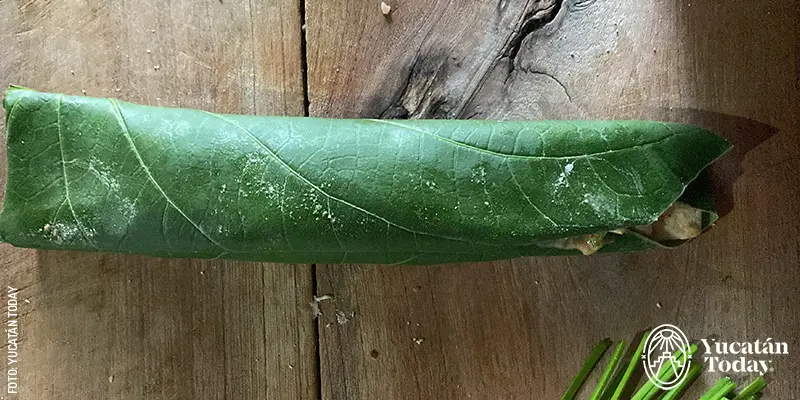
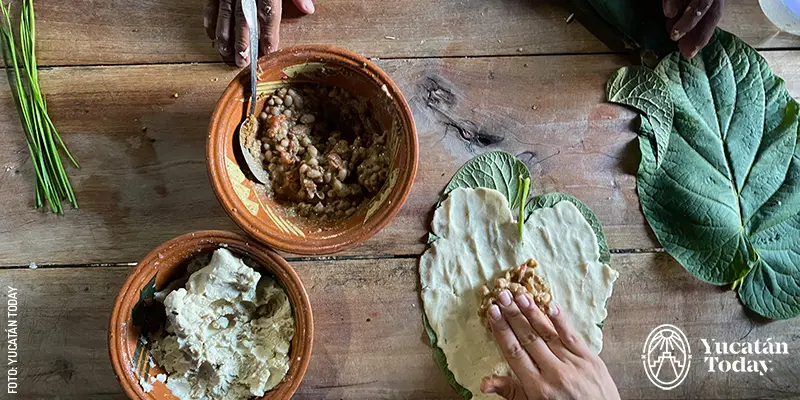
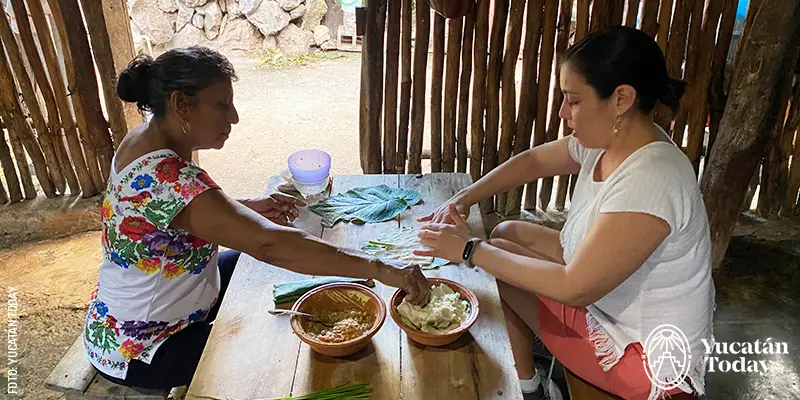
Doña Eusebia, fondly known as Doña Chica, is famous for preparing this culinary delight along with many others like Panuchos, Tortas, and Salbutes. She treasures these recipes as part of her family legacy. You can contact her at 986 861 3775 to confirm availability or pay a visit to her home on Calle 28 x 31 y 33. If your visit to Espita falls on a Tuesday or Thursday, chances are you'll find Doña Chica selling Kots’obes for $15 pesos each at the evening Tianguis located in the central park. This beloved Tianguis, which recently celebrated its 9th anniversary, is a gathering (and selling) point for over 30 women every week, a true reflection of Espita's vibrant daily life.
.webp)
But that’s not the only traditional dish that Espita has to offer: head to Georgina Martínez Cortés’s home, where you’ll learn how to prepare Xupiik. This flavorful dish, (which some say translates to 'the Chili is gone,' due to the preparation involving deveining and boiling the chili to tame its heat) is a delicious combination of marinated meat, chilies, tomatoes, and other local flavors that will delight your palate. Maestra Georgina will guide you (under previous reservation) through the steps to masterfully prepare this dish, and once it's ready, you can savor it with a side of rice and freshly baked bread. If you’re in a rush, Maestra Georgina also offers Xupiiks and Buli Wah (bean bread) for sale upon request on FB: Georgina Martínez Cortés.
Where to stay in Espita

Casa Kacaya
Located near Espita’s Centro and with just two years in operation, Casa Kacaya offers a unique lodging experience in Espita. The rooms feature a distinctive ambiance that blends the original 1920s architecture with modern touches. And let’s not forget its restaurant, which seamlessly fuses tradition with gourmet flair in its regional menu. Its restaurant is open to the public, offering a delightful array of beverages including habanero margaritas and chaya mojitos. Pricing fluctuates with the seasons, ranging from $3,000 pesos per night for the coziest room to $6,000 pesos per night for the most lavish accommodation.
Casa Kacaya
Calle 26 #200 x 23 y 25 Centro, Espita
Tel. 986 114 2633
IG: casa_kacaya
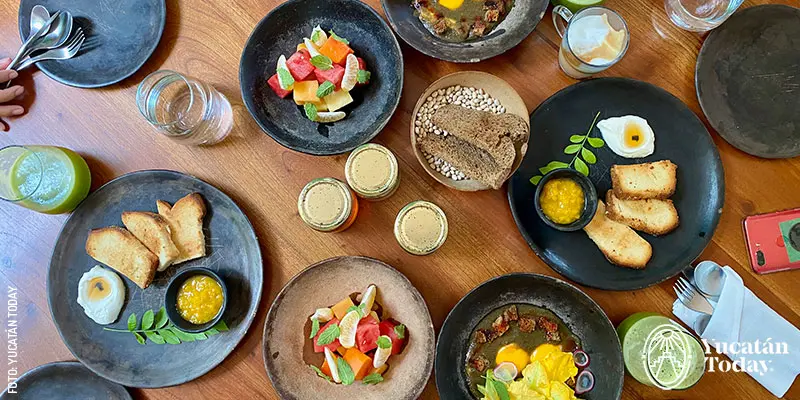
Casona Los Cedros
Casona Los Cedros is another prominent lodging option in Espita. This renovated architectural project, once owned by a renowned Espita family and later transformed into a beloved cantina, offers eight luxurious rooms with various amenities. Furthermore, its gourmet restaurant, CASONA, led by Chef Jorge Ildefonso, promises a culinary adventure that's a must-try during your stay. Notably, the restaurant and bar are also open to the public. Prices vary, starting at $3,850 pesos per night for the King room and reaching $5,950 pesos per night for the suite, which offers an exclusive private pool in addition to the central swimming pool in the beautiful hotel courtyard. All bookings include breakfast.
Casona Los Cedros
Calle 26 #199 x 23 y 25 Centro, Espita
Whatsapp: 986 114 3220
.webp)
Jardines de Ixchel
If you’d prefer to steer away from the bustling center of Espita, follow the Xukúm highway and head to Jardines de Ixchel. Just ten minutes from Villa of Espita by Tricitaxi, you'll find this mystical and peaceful place—a perfect escape for relaxation and rejuvenation. Opened in 2018, this paradise offers lodging, massages, yoga classes, and more. In this green oasis, visitors can enjoy the local flora and fauna in their one-kilometer nature trail, as well as energy-aligning activities such as Temazcales and sacred fires. They offer three rooms and camping space, so be sure to contact them at 984 205 8874 for availability.
Jardines de Ixchel Carr.
Espita - Dzitás Km 0.7, Espita
Tel. 984 205 8874
IG: jardinesdeixchel
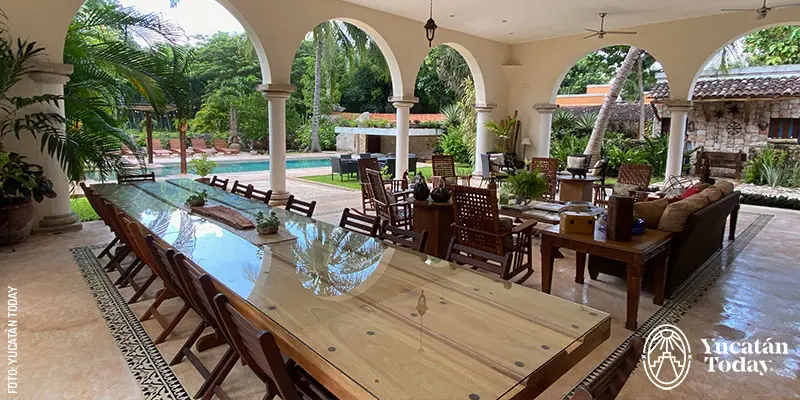
Hacienda Santa Cruz Regadío
This stunning private hacienda, located near the sub-municipality of Holcá, stands as a testament to the history of Espita and Yucatán as a whole. This cedar tree-filled paradise was one of the several sugarcane haciendas of Espita during the 19th century.
Here’s another sprinkle of historical context for you: during this era, population growth led to a corn shortage in Mérida, prompting the search for new suppliers. México's Independence also played a huge role in disrupting the state’s economy, leading to a shift in its primary market, Havana (which remained under Spanish rule). In Mérida's pursuit of a thriving commercial economy, cattle ranch owners were encouraged to diversify into crop cultivation to meet the growing demand for corn. They also lifted the colonial prohibition on sugarcane cultivation. These moves kickstarted the formation of haciendas focusing on sugarcane and Aguardiente production around Espita. This economic boost gained Espita recognition as a sugarcane and, notably, an Aguardiente producer starting from 1844. It also ushered in prosperity for the municipality, reflected in the flourishing trade, enhanced infrastructure, and improved quality of life for its residents.
Hacienda Santa Cruz Regadío, a once-abandoned relic now revitalized and transformed into a breathtaking retreat, serves as a living monument to Espita's Golden Age. If you’re looking for a place to truly gauge the grandeur and natural beauty that Yucatán holds, this hacienda stands as a perfect testament to Mother Nature's prowess and a glimpse into the historical opulence that graced Espita in its prime.
There are six rooms in this hacienda, available for individual booking, but you also have the option to reserve the entire hacienda for exclusive events like photoshoots or weddings. Each stay includes a continental breakfast to start your day off right. As for activities, Hacienda Santa Cruz offers a variety of activities under previous reservations including trips to Chichén Itzá, Las Coloradas, or Valladolid, among other destinations. For nature enthusiasts, birdwatching tours, and visits to a Melipona bee farm are also options to do. Be sure to visit their social media (listed below) for pricing details.
Discover the wonders of Espita and delve into the rich tapestry of culture and traditions that grace this delightful corner of Yucatán. With its enthralling past, genuine culinary delights, and one-of-a-kind lodging options, Espita promises an unforgettable escapade for those yearning for a calm retreat. Don't miss out on the opportunity to explore this hidden gem!
Hacienda Santa Cruz Regadío
Carretera Sucilá-Espita Km 7 (en dirección a Holcá), Espita
Tel. 999 278 6137
FB: Hacienda Santa Cruz Regadío
Distances to and from
- Distance between Espita and Tizimín: 30 km (35 minutes by car)
- Distance between Espita and Valladolid: 50 km (50 minutes by car)
- Distance between Espita and Chichén Itzá: 55 km (55 minutes by car)
- Distance between Espita and Izamal: 80 km (1:15 hours by car)
- Distance between Espita and Río Lagartos: 82 km (1:10 hours by car)
- Distance between Espita and El Cuyo: 129 km (1:50 hours by car)
- Distance between Espita and Mérida: 160 km taking the toll road, 168 km via Motul (2:10 hours by car in either case)
- Distance between Espita and Tekax: 170 km via Pisté and Yaxcabá (3 hours by car)
- Distance between Espita and Uxmal: 238 km via Kantunil (toll road), 246 km vía Sucilá (2:55 hours by car in either case)
- Distancia entre Espita y Tekax: 170 km vía Pisté y Yaxcabá (3 horas en auto)
- Distancia entre Espita y Uxmal: 238 km vía Kantunil (autopista de cuota), 246 km vía Sucilá (2:55 horas en auto en ambos casos)
Destinations in the state of Quintana Roo
- Distance between Espita and Tulum: 150 km (2:15 hours by car)
- Distance between Espita and Playa del Carmen: 180 km taking the toll road (2:20 hours by car)
- Distance between Espita and Cancún: 200 km taking the toll road (3 hours by car)
Sources:
Santiago Pacheco, E. A., López Bates, F. I., & Ramos Domínguez, L. E. (2015). Espita en el crisol del tiempo. Historia e imagen. Impresora y Editora Xalco, S.A. de C.V.
Yucatán Travel. (2023). Estrategia Nacional de Pueblos Mágicos. Proceso de incorporación. Espita. Espita. Obtenido de https://yucatan.travel/wp-content/uploads/2023/02/Espita-Expediente-Completo.pdf
BiCentenario. El ayer y hoy de México, núm. 57. Obtenido de: http://revistabicentenario.com.mx/index.php/archivos/el-atentado-a-la-catedral-de-merida/
Artículos relacionados
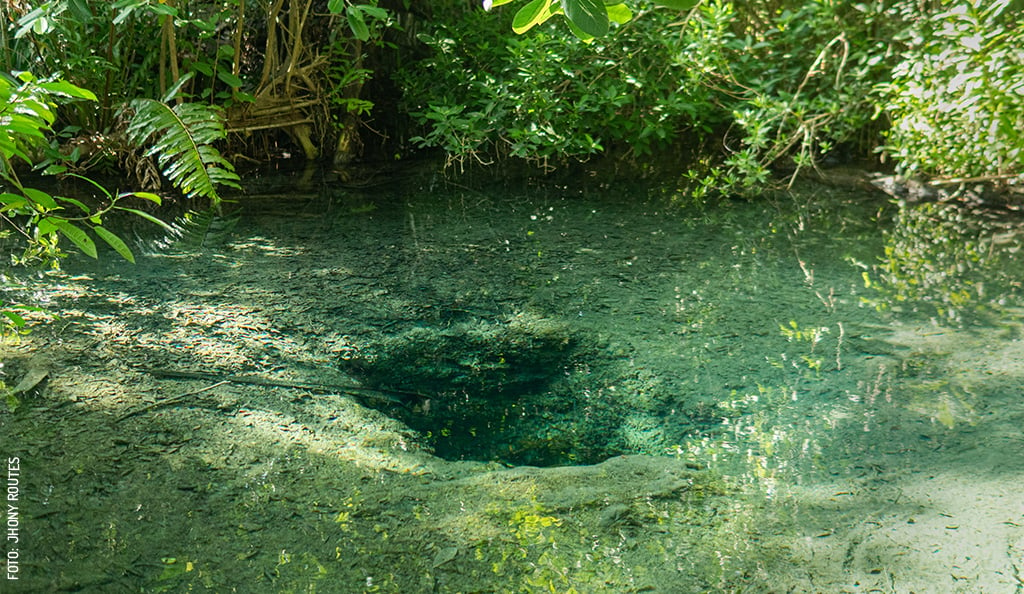
Petén Culú: el paraíso escondido del ecoturismo en Sisal
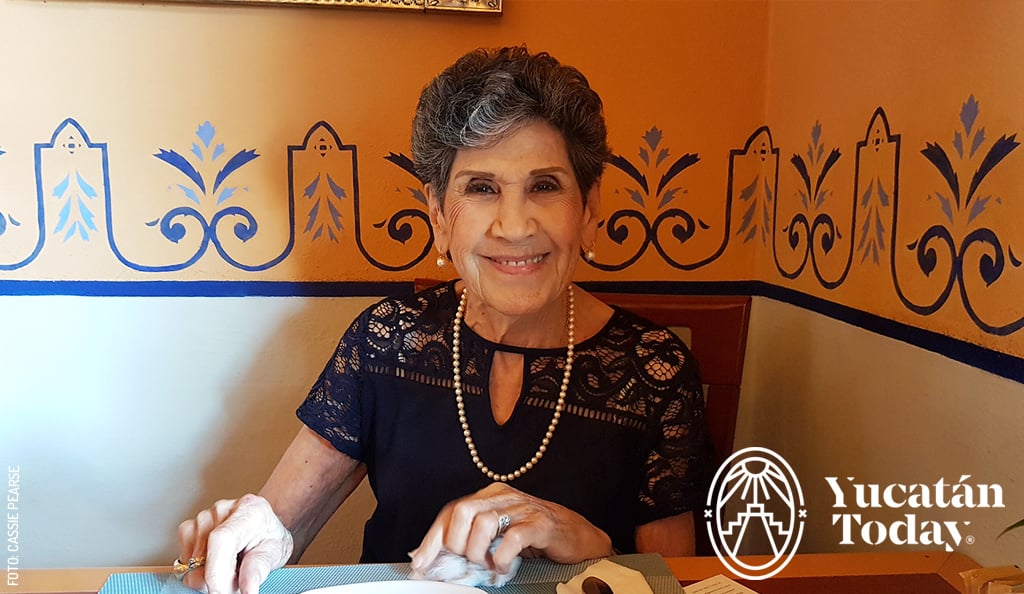
Señora Homa, Hotel Casa San Ángel
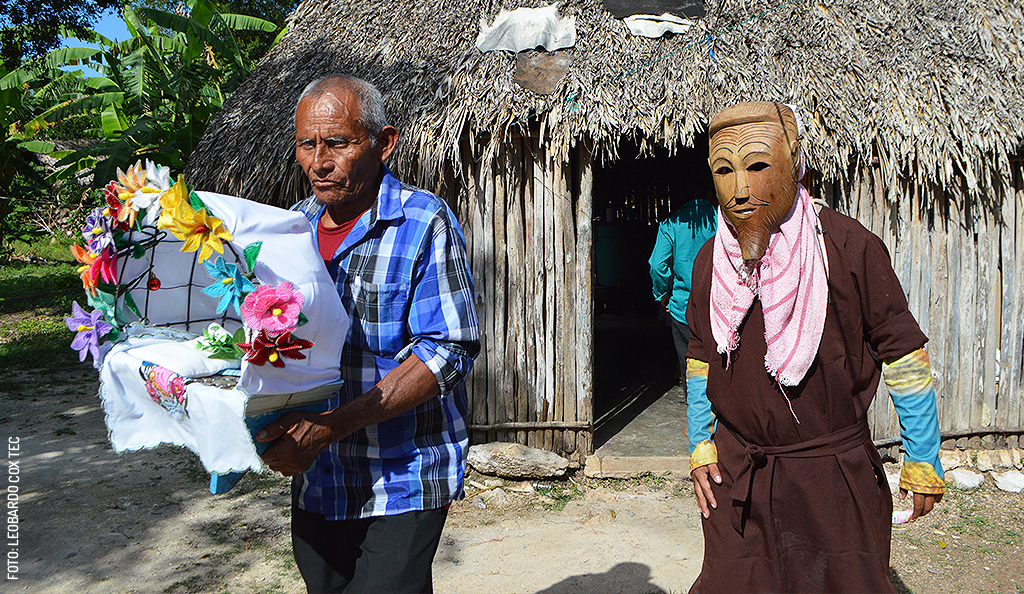
La Danza de Señores de Chikindzonot
Related Posts

Riding a Colectivo in Mérida: A Local Adventure Worth Taking
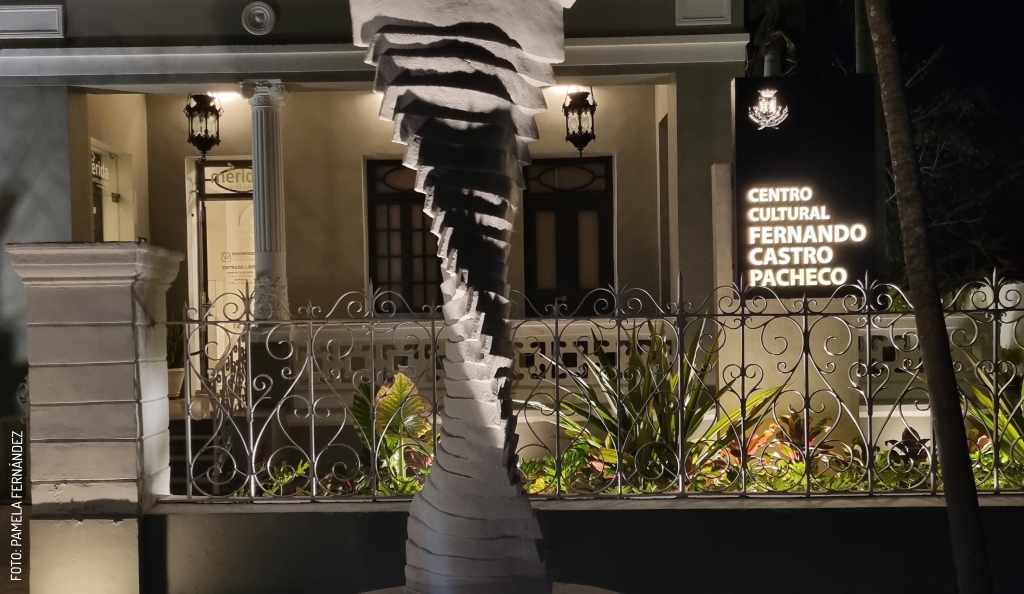
A Seven Day Stay: Telchaquillo, Teabo, Valladolid, Cenotillo





